Get Your Medicare Enrollment Questions Answered
An individual becomes Medicare eligible, which is typically when they turn 65. There are many questions that may arise regarding health insurance coverage and what a person needs to do. Many times people start getting bombarded by information in the mail telling them about Medicare supplements, Medicare advantage plans, and Medicare prescription drug plans. It’s common for a person to feel as though there’s so much information pushed at them it is hard to understand it all. With so many carriers, supplements, and options it makes it hard to determine which Medicare product to purchase and which is the right fit for you.
Truth is, there is no one solution for every single person. The plan you purchase depends upon you, hour health, and your comfort level with the various products.
In this article, Jamie Bramman, a benefits advisor at Thams Agency helps answer these questions.
“I want to help ease the confusion by answering a couple of the most commonly asked questions I get from clients and prospects in regard to Medicare and Medicare enrollment.”
Here are some common questions that are asked.
1) When am I Medicare eligible?
Unless you’re disabled, have been diagnosed with ALS (Lou Gehrig’s Disease), or are in end-stage renal disease, the answer is age 65. One of the most common mistakes I have had people make is that they assume you can enroll in Medicare as soon as you start drawing Social Security benefits, which is as early as age 62. Unfortunately, even if you retire early and start drawing Social Security, you still have to wait until you are 65 to enroll.
2) How do I apply for Medicare?
The answer to this question depends upon two things.
1. You are turning 65 and currently receiving social security benefits.
If you are already receiving Social Security retirement benefits before age 65, then you will automatically be enrolled in Medicare, this includes both Part A and Part B. You’ll want to consider enrolling in a Medicare Supplement, Advantage Plan (Part C), and/or Drug Plan (Part D) when you turn 65.
2. You are turning 65 and not yet receiving any social security benefits.
If you are not receiving Social Security retirement benefits, then you will need to apply for Medicare. You can do this online (www.ssa.gov/Medicare/benefits) or in person at a local Social Security Administration office.
3) When do I apply for Medicare?
You can apply for Medicare up three months before turning 65. I typically recommend getting enrolled as soon as you are able. The deadline to enroll is three months after you turn 65, and your benefits will begin later.
- If you enroll during the three months before your 65thbirthday, your benefits begin on the first day of the month you turn 65. Let’s say your birthday is on the first of the month, your coverage will start the first day of the month before (i.e. birthday on February 1st, Medicare benefits start January 1st).
- If you enroll in the months after your birthday, your benefits will be delayed depending on how long you wait (i.e. enroll the month after you turn 65, coverage usually begins 2 months after you have signed up).
There may be penalties if you do not enroll when you are first eligible. A penalty  of 10% may be added to your Part A and/or your Part B.
of 10% may be added to your Part A and/or your Part B.
If you do not enroll when eligible, there are annual opportunities to enroll. If this may apply to you, please bring this up in our discussion.
4) What is the difference between all the “Parts” of Medicare (i.e. Part A, Part B, Part C, & Part D)?
Medicare Part A
This is hospital insurance that covers inpatient hospital care, skilled nursing facility, hospice, lab tests, surgery, and home health care.
You may have heard that most people get Part A for $0 premium, this is true if you or your spouse paid Medicare taxes for 10 years while working. If I person hasn’t paid Medicare taxes for 10 years, there is a monthly premium.
Medicare Part A has an annual deductible and then copays/coinsurance for services that you will be responsible for.
Medicare Part B
This covers doctors and other healthcare providers’ services and outpatient care. Part B also covers durable medical equipment, home health care, and some preventative services.
When you enroll in Part B there is a monthly premium. Most people will pay a standard premium amount ($144.60 in 2020), but this amount may be higher based on your income.
When a person enrolls in Part A and/or B they have the option of also enrolling in a Medicare Supplement plan, Medicare Advantage Plan (Part C), and/or Prescription Drug Plan (Part D).
Medicare Part B has an annual deductible and then has an 80/20 split. What that means is that Medicare pays for 80% of covered services after the deductible is met, and then you are responsible for the remaining 20%.
Medicare Part C
Part C plan or Medicare Advantage Plans are plans offered by private companies to provide you with all Part A and Part B benefits, most also offer prescription drug coverage, these are NOT the same as Medicare Supplement plans. These plans have a yearly out of pocket cost for Medicare Part A and Part B covered services, some have copays for services, and for those that offer drug coverage have copays for them as well. Providers will bill the private insurance company for services and NOT Medicare. The monthly premium(s) for Part C plan vary as well as the coverage options, but some can be little as $0 premiums.
A person can purchase either a Medicare Supplement OR a Medicare Advantage plan to help cover healthcare costs. A Medicare Supplement can provide coverage for what is not covered by Part A and B. These plans will help to cover that Part A deductible and copays/coinsurance as well as the Part B 20% out of pocket costs. These plans have varying monthly premiums and coverage options.
If you enroll when you become eligible for either type of plan, you typically will have a guarantee issue policy which means they will accept you regardless of your health. Outside of this period, you will have to answer health questions and go through underwriting to be accepted by the carriers.
Medicare Part D
Medicare Part D plans or Prescription Drug Plans (PDP’s) provide prescription drug coverage. These plans are offered and managed by private companies. Each company has a list of drugs (formulary) that they will cover and what the cost to enrollees will be. Normally, drugs are split into tiers and copays/coinsurance amounts are based on those tiers.
Premiums and drug costs for PDPs vary from company to company. Before enrolling, you will want to verify that ALL of your current medications are covered and get an estimate of what the costs to fill your prescriptions will be.
It is recommended that a person enroll in a PDP when they are first eligible to avoid the late enrollment penalty. This penalty is added to your Part D premium for the rest of your life or as long as you are enrolled in a PDP.
Still Have Medicare Questions or Need Help with Medicare Enrolment?
Whether you are just turning 65 or are already enrolled in Medicare, if you have questions or need clarification on something, please give me, Jamie Bramman, a call at (712)343-6332 or email me at jbramman@thamsagency.com. I would be more than happy to discuss your individual situation and make sure you are getting the most out of the benefits you have earned and deserve.
* Please note, this post is not affiliated with or endorsed by the government or federal Medicare program & calling the number above will direct you to a licensed insurance agent.
